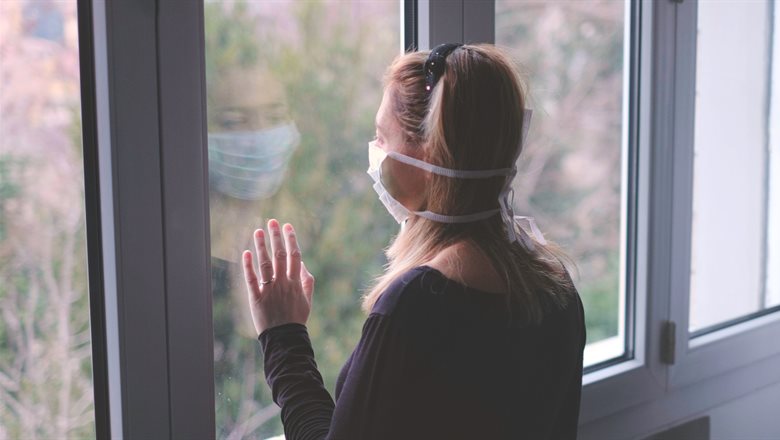What is quarantine? Quarantine is a state of isolation in which people who have been possibly exposed to infection are put in. In history quarantine has been a method used to prevent the spread of diseases. An example of this in history is in Venice during the 14th Century when ships arriving in port from Venice had to anchor for 40 days before interacting with the dock and has been implemented in other time periods by closing off areas of high concentration of infection. This method has become a widely accepted practice during the current Covid-19 pandemic due to placing a limit on the amount of human interaction and reducing the transmission of Covid in populations across the world. The strictness of the quarantine has varied due to the amount of freedom the governments have allowed their citizens to have, but the effects from being in quarantine has remained the same.
There has been a rise in cases of mental health issues amongst people due to quarantining for so long and the limit of human interaction. A recent study of 1,500 American adults discovered that cases of depression have risen in the U.S. and range from moderate to severe. Cases of mild depression have risen to 24.6% from 16.2% and severe depression has risen from 0.7% to a whopping 5.1% which is a little under a 500% increase.(Ducharme) This can be caused by multiple factors, such as losing relatives or just being confined to their home spaces in quarantine/isolation.

In 2010 article form the Journal of Hospital Infection, the author, Abad, found through a collection of 16 studies, that most of the studies showed negative results in the patients well being both mental and behavioral. One of the biggest problems faced is depression. (Abad) Depression is an overwhelming feeling of sadness, loneliness, and hopelessness. Symptoms of depression include, trouble concentrating, fatigue, feelings of worthlessness, trouble with sleep, irritability, and loss of interesting in things you enjoy.

Depression. www.kcl.ac.uk/newimages/ioppn/news-spotlights/adherence-to-quarantine-during-covid-19-pandemic-cropped-780×440.x91bfc662.jpg.
Studying the history of depression is difficult because the disorder was only finally defined and recognized in the 1970s, when the medical model of mental disorders recognized it as an illness, much like a physical one, which means that doctors finally started to realize that these are treatable and are caused by things rather than someone solely being born with it, although this does happen.
Today it is easy to pull up a search engine and find an article giving statistics on depression during the pandemic, but in the past this specific issue was not documented as well because of a lack of understanding. A piece of literature that could be considered historical documentation of the psychological effects of pandemics and quarantine on people is an exaggerated account of the author’s relative. written after the London Plague in 1722 by Daniel Defoe titled “A Journal of the Plague Year”. In this novel he described experiencing the plague and the madness it caused,” mothers murdering their own children in their lunacy, some dying of mere grief as a passion…others frightened into idiotism…”(Daniel). Luckily from Covid-19 people have not gone this stir crazy yet, but one can see that being cooped up in a pandemic can cause people’s mentalities to change and this pandemic is no different.
Hospital. cdn.cnn.com/cnnnext/dam/assets/200301161437-01-spanish-flu-1918-restricted-exlarge-169.jpg.
A recollection of the morale of people during the Spanish Flu in 1918 comes from a 106-year-old woman named Helen Anstead. In an article from the Times Republican she recollects, “I remember that people were fearful, like they are now…so people don’t get depressed from their situation. And we can keep helping each other physically and mentally,”(Woman) This account of the Spanish Flu pandemic that swept across America highlights a very important point, just because there wasn’t studies being conducted to keep track of it, doesn’t mean that people were not struggling the same way people are now.
As humans we are reliant on interaction with others to regulate our feelings and values but putting one in isolation throws that regulation out of balance and can greatly affect someone’s mental state. This factor is something important to keep in mind when trying to protect people from a pandemic because without taking measures to deal with the issue, it can do more harm than good without people even realizing the effects. One of the silver linings from this pandemic is the light it has shined on mental health and how people who were too busy with work and life to think about it are now looking at it take place in their world as well.
Sources
Abad, C., et al. “Adverse Effects of Isolation in Hospitalised Patients: a Systematic Review.” Journal of Hospital Infection, W.B. Saunders, 10 July 2010, www.sciencedirect.com/science/article/abs/pii/S0195670110002446.
Casarella, Jennifer. “Signs of Clinical Depression: Symptoms to Watch For.” WebMD, WebMD, 17 Sept. 2019, www.webmd.com/depression/guide/detecting-depression.
“Daniel Defoe: A Journal of the Plague Year.” London Fictions, www.londonfictions.com/daniel-defoe-a-journal-of-the-plague-year.html.
Ducharme, Jamie. “Depression Has Skyrocketed During the COVID-19 Pandemic.” Time, Time, 4 Sept. 2020, time.com/5886228/depression-covid-19-pandemic/.
“Woman, 106, Reflects on Living during Spanish Flu, Great Depression, COVID-19 Outbreak.” Timesrepublican.com/, www.timesrepublican.com/news/todays-news/2020/05/woman-106-reflects-on-living-during-spanish-flu-great-depression-covid-19-outbreak/.

I like how the author starts the article with a question. It gets you thinking about the topic being discussed more. Their use of figures to support their point is great as well. Having scientific data to back your point is always helpful.